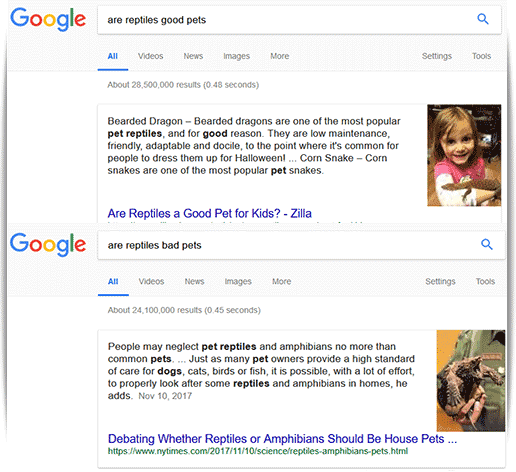
What is conversational content writing?
There was a time when content writing was mostly done to improve search engine rankings for selected search terms or keywords.
Although, still, the primary reason why clients contact my content writing services is to improve their search engine rankings – which my content writing definitely achieves for them – they also understand the importance of conversational writing. They know that to be effective, their writing needs to make an impact.
It’s a welcome change. It shows that they have begun to understand what an important role content writing plays in the success of their business. It no longer is just a tool to mindlessly fill the website with “keyword-centric” content for SEO.
What does conversational content writing mean?
In very simple terms, conversational content writing means writing in the way we normally talk.

What is conversational content writing?
How do we talk?
Do you talk to a friend like this – “In view of the last conversation that we had pertaining to your conference proposal I would like to put forth a suggestion that you may like to consider while making the presentation.”
You don’t. You may simply say, “Remember the talk about your conference? Would you mind if I suggested something? I feel it will really help you make a better presentation.”
We don’t use very long sentences. We don’t use complicated expressions. We use day-to-day words.
Since conversation means an informal talk, we’re not talking to impress, and the same holds true for writing. We’re not writing to impress, we are writing to engage.
It’s just like talking to a friend or a casual acquaintance.
No, I don’t mean you should use abusive words (just like you use them with your friends) in content writing, but even without using cuss words you can be conversational.
Many writing experts or advisors say that you don’t need to be a stickler for grammar rules, but I think it depends on what you’re writing.
On one hand you don’t want to come off as a person who doesn’t know the language he or she is writing in, on the other hand, your writing shouldn’t sound as if lots of effort is being put in to sound “polished”.
A word of caution: there is a difference between writing in a conversational style and dumbing down your writing.
For example, you can write on blockchain technology and its implications on bank transactions, using all the jargon that is being used in the industry, but still, you can make your writing conversational.
Why conversational content writing is better?

Casual conversations are more effective
You want to engage your readers.
You don’t want to bore them or put them off or distract them by using words and expressions they don’t understand.
Remember that content writing is all about achieving the end goal – getting more business.
The purpose of content writing isn’t showcasing your writing prowess.
The person who is reading your blog post or your email message must feel at ease. He or she shouldn’t feel intimidated. The sentences and phrases must not sound lifeless.
Also, it is easier to trust a person who talks to you rather than delivers a long monologue of highfalutin words, expressions and promises that sound bizarre.
Stiff writing sounds artificial whereas, conversational writing sounds authentic.
“Proper” writing makes you sound distant whereas, conversational writing style makes you seem like a friend or an acquaintance.
Also, once you practice, it’s easier to write content in conversational style compared to the formal style you might be used to.
Here are some benefits of writing content in conversational style:
- Easier reading for your visitors and email recipients.
- Clarity of thought as you focus more on the message and less on how you should write that message.
- Simpler sentences make bigger impact as people’s brains aren’t occupied with trying to decipher what you have written.
- Your readers can easily identify with you because you talk in their language.
Conversational content writing is better for SEO

Conversational content writing is better for SEO
Your SEO is decided by artificial intelligence driven by the machines. Although the ranking algorithms used by major search engines like Google and Bing are quite advanced, they prefer simpler sentences that mean exactly what you are writing.
Conversational content writing makes you write simpler, to-the-point sentences.
It is advised that a sixth grader should be easily able to understand what you’re writing.
If a sixth grader can make sense of what you have written, so can artificial intelligence.
How to write in conversational style?
When newbie content writers approach me and seek my advice on how they should write, I always tell them, they should write as they talk minus grammar mistakes.
Every writer who truly wants to write has a unique style.
Sure, many organizations and businesses prefer to stick to a style guide, and there is nothing wrong in that, but the style guide is mostly used to structure the content rather than dictate how a content writer must write.
Listed below are some pointers to keep in mind when you’re trying to write your content in conversational style.
Assume someone is sitting in front of you having coffee, and talk to that person

Talk as if sitting across a coffee table
This is the easiest way of adopting a conversational style while writing content.
Imagine someone sitting at the coffee table in front of you and your talking to that person.
Remember that depending on who that person is (defining the persona) you may slightly change the way you talk to him or her, but basically, the keyword is “talk”.
If it helps, before writing, record. Use an audio recorder on your phone and communicate your message just the way you are talking to someone.
Don’t pretend to sound erudite. Having said that, if this is your natural style, then sure, play around with it.
Basically, no matter how you write, it shouldn’t be stiff.
Make ample use of “You” and “I”

Speak in terms of you and I
Write in the first person as much as possible. Since, conversational style means talking to someone and assuming that a person is sitting in front of you, it makes more sense to use “you” and “I” instead of “you” and “we”.
Though, I will admit that it is not always possible to use “I” instead of “we” especially when you are writing on behalf of your business. On your official web pages, it makes more sense to write in terms of “we” because we are writing on behalf of your entire team, but on the blogs, it is better to use the personal touch.
Also, when you are sending out email campaigns, it is always better to use your name and then use “I” and “you” instead of “we offer this” and “we offer that”.
Tell a story

Tell a story through conversational content writing
“Tell a story” has almost become a cliché in the realms of content writing and content marketing. What does it really mean?
It’s like, instead of telling that my content writing services are awesome and then leaving it at that, I give you a live example of…
Mr. Mason’s business wasn’t growing because of low conversion rate. Even his search engine traffic wasn’t picking.
He had worked with a few content writers, but after having spent a few hundred dollars and having published 20 odd blog posts, the performance of his website was the same it was before he started trying out various content writers.
Then he came across my Credible Content website and liked how I have structured the main web pages and the amount of information that I have shared on my content writing and content marketing blog.
Since he had already been disappointed with his previous content writers, he contacted me skeptically.
At the outset I told him that more than “SEO content” he needed good content, conversational content, and engaging content.
There was no emotion in his existing content.
If you don’t feel enthusiastic when talking to people, how are you going to motivate people into becoming your paying customers and clients?
Whatever he had written on his website, it didn’t feel that he really meant it.
We agreed to revamp his existing content instead of writing new content because although his current content wasn’t performing, he had chosen good topics and those topics were relevant to his business.
So, I spruced up his main content and blog posts. I rewrote content that was looking like essays into two-way conversations.
Totally recognizing his need for better SEO, I rearranged the text to make it more search engine friendly.
The existing content was quite thin. I rearranged some of the posts into authoritative, long form blog posts and included verified data from trusted resources.
I set up a routine/content calendar for him, which is very important.
In a couple of months, both his rankings and bounce rate improved.
Now he is regularly getting content from me. His business is picking up.
That’s a story.
Try to help people

Help people through content writing
When you are constantly trying to make people do something for you, your stakes are higher, and this shows in your writing.
Instead, just try to help people. Helping gives you confidence. When you have confidence, it automatically shows through. Confidence makes conversational content writing easier and seamless.
Helping doesn’t always mean writing tutorials. Helping also means helping them make a decision in your favor.
So, if writing tutorials is not your game, you can publish industry news.
If new research data is regularly available in your niche, analyze the data and explain it to your visitors.
You can publish news. You can publish interviews. You can respond to blog posts and articles published elsewhere.
The basic idea is, regularly generate engaging, useful content you are enthusiastic about. You will be automatically writing conversational content.

















